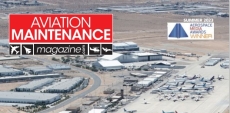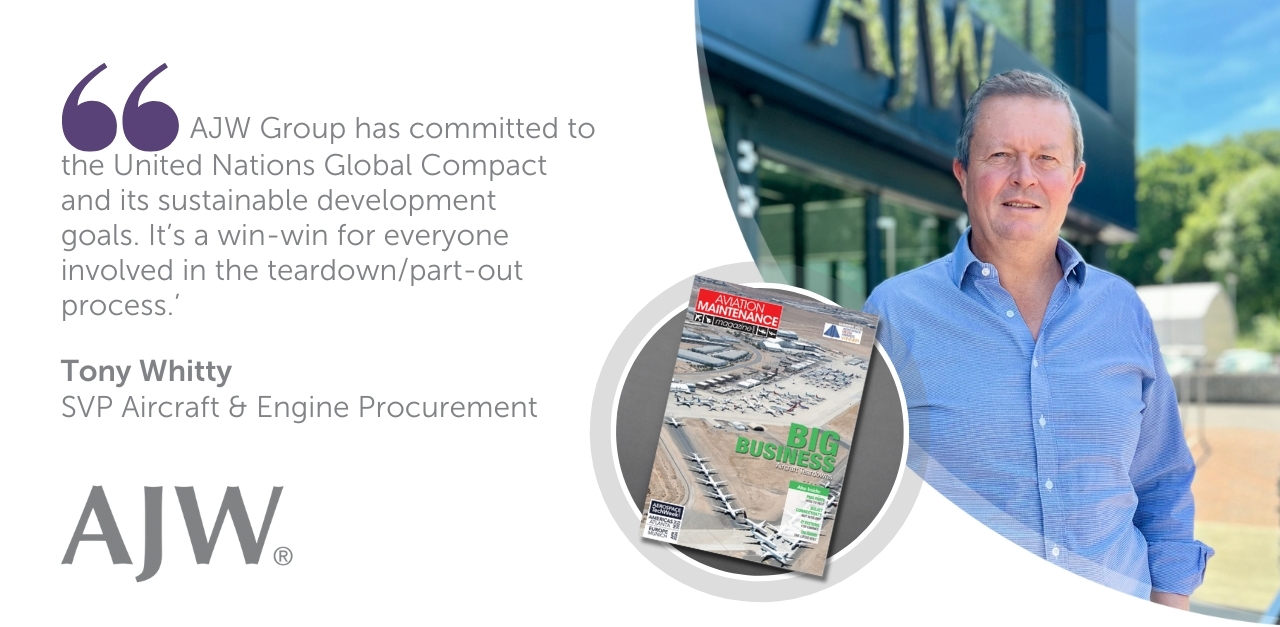

24/7 AOG Critical Response
Hotline![]() UK +44 1403 798888US +1 877 780 2008
UK +44 1403 798888US +1 877 780 2008
Our award winning global AOG service is manned 24 hours a day, 365 days a year.
Please call +44 1403 798888 or email aog@ajw-group.com.

24 Aug 2023

Reduce, reuse, and recycle - Aircraft teardowns are a constant and valuable source of high-quality, cost-effective spare parts for the aviation supply chain. Teardowns assist with tackling the increasing need for replacement components and offer an environmentally friendly solution to aircraft operators, MROs, and others in the industry.
In the latest edition of Aviation Maintenance Magazine, Mark Robins speaks to AJWs Senior Vice President of Aircraft & Engine Procurement, Tony Whitty, and others in the industry, about the process of harvesting and monetising these recycled assets.
Bringing aircraft components and parts back into the supply chain to maximise their value is the primary goal of the teardown and part-out process says Whitty. To gain the highest revenue for the seller, it is the high-value parts that are targeted, he notes. These are then reused as spare parts for other aircraft still in operation.
After removed parts have been inspected and catalogued into the system, their condition is assessed for serviceability and their potential resale value. If parts can be reused, they are overhauled in facilities such as AJWs MRO facility based in Montreal, AJW Technique, and are offered to the aftermarket for resale, lease, or exchange.
Part-out is a specific subset of the teardown process. Although both processes feed into the aftermarket, part-out tends to focus on a specific market demand for essential parts whereas teardown caters to the broader spare part aftermarket. Ultimately, the process is geared towards making a profit, and teardowns tend to be more lucrative than part-out due to the process involving a wider range of items.
The global pandemic has increased the number of aircraft being sent for teardown, however, ongoing labour shortages, part availability, and logistical challenges have added to slow TATs. Added to this, the slow delivery of new aircraft has kept many older aircraft in operation longer than normal, leading to a growing demand for used serviceable material (USM), which has led to an increase in component pricing.

Whitty discusses the environmental benefits of the teardown part-out process and comments on the Group’s commitment to creating a more sustainable aerospace industry through its MRO operations, ‘We’re all trying to reduce the environmental impact of our businesses, which is why AJW Group has committed to the United Nations Global Compact (UNGC) and is committed to its sustainable development goals. It’s a win-win for everyone involved in the teardown/part-out process.’
The article mentions the various sectors that benefit from the process, these being MRO facilities, part traders, lessors, aircraft manufacturers, and the local economy. Robins asks questions about the procedures involved in the teardown process, the importance of monitoring market trends, and the needs of end users to maximise the process return.
The teardown part-out process involves an initial assessment, awareness of regulatory compliance, the disconnection and isolation of various systems, component removal, structural dismantling, inventory and documentation, parts evaluation and repair, storage and distribution, and lastly, scrap management. All the while, the teardown team must be acutely aware of hazardous material management to protect the environment.
The article contributors discuss the reasons behind certain aircraft being easier to teardown than others and discuss detail about the removal of engines, flight control surfaces, and structural removals.
The disassembly of an aircraft is no small feat and requires specialist equipment and a team of skilled and qualified engineering, but the benefits to the industry and environment cannot be underestimated.